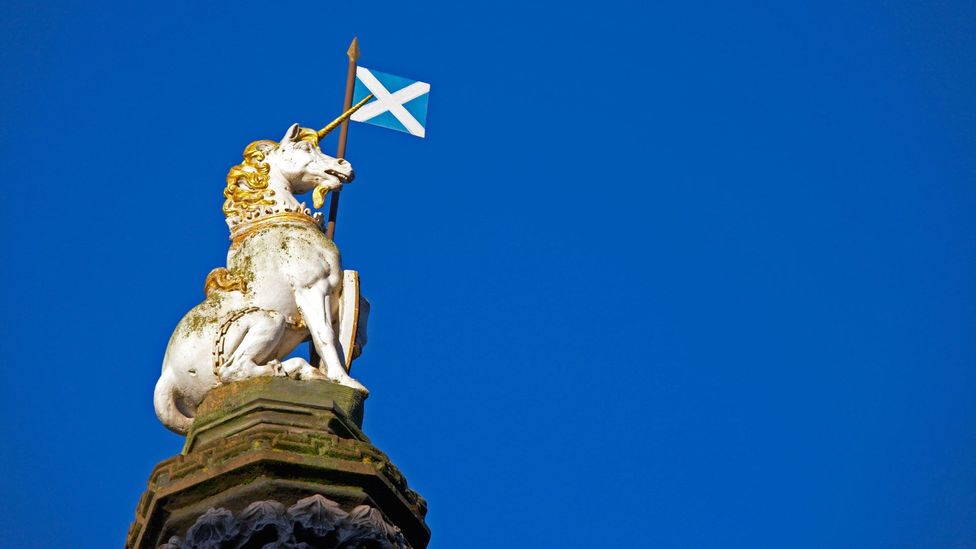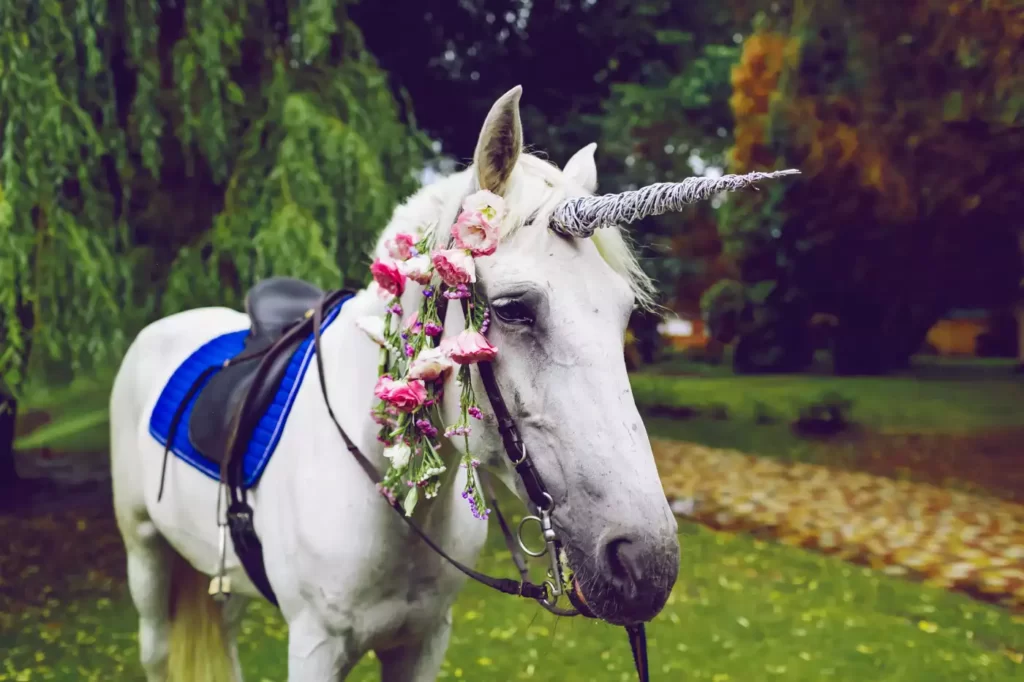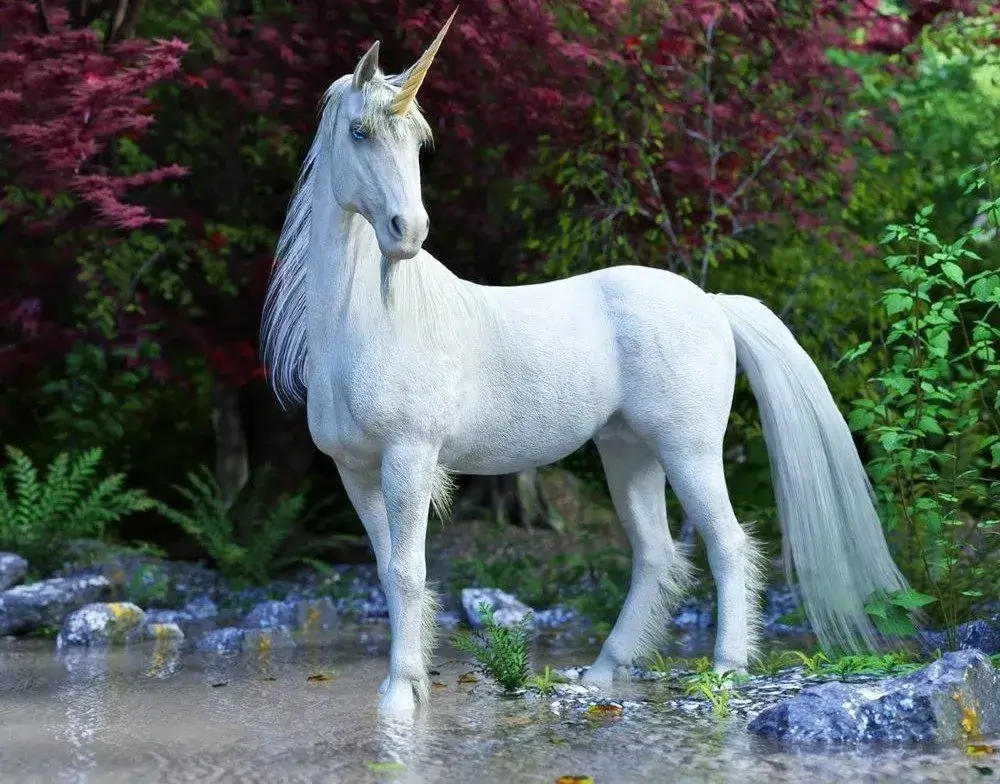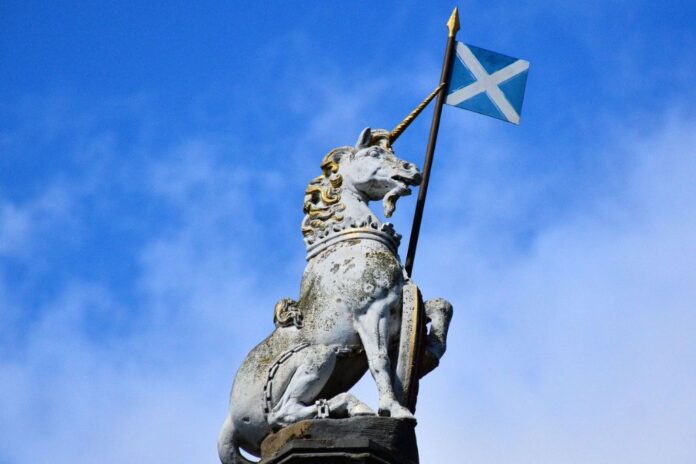Elyse Waters, who is organizing Unicorns: A Zoological Analysis as part of Scotland’s history festival, grew fascinated in the fabled beast after discovering a medieval cookbook with a recipe for how to cook it.
During her investigation, the historian discovered that the Unicorn was seen to be the natural opponent of the lion, a symbol that the English royals embraced roughly a century ago.
According to folklore, the lion and unicorn despise each other, a custom that dates back to 3,500 B.C.
The second natural adversary? The elephant’s name.

“It was always said that the unicorn would always defeat the elephant, that it possessed such incredible strength that, despite its diminutive size, it couldn’t be defeated by something as large and powerful as an elephant.”
“I believe it had something to do with the idea of nobility and purity as well.”
“Among the various depictions of the unicorn and the stories that go with it, one in particular stands out: the water cleansing story.” A snake would approach the watering hole and poison it, but the unicorn would appear and dip its horn into the watering hole to cleanse it for all the other animals.
“So it had this power to dominate, but instead of using it, it used it to protect and provide resources for other animals.” And during the Middle Ages, when there was a strong emphasis on chivalry, it became the ultimate animal. It could do whatever it wanted with that power, but it decided to utilize it to improve other things.
“When you combine this with all of the other stories about its greatness, power, and ferocity – you can understand why they wanted it.”

The unicorn has been thought to exist in Western regions of the world for roughly 2,500 years and was designated as Scotland’s national animal by King Robert in the late 1300s.
The fabled creature’s existence was only disproved in 1825 by scientist Baron George Covier, who stated that it was not possible for an animal with a split hoof to have a single horn rising from the top of its head. The unicorn has been worshiped for almost 4,000 years, primarily in eastern Asia, where it was seen as a benevolent bringer of good luck.
“While Dr. Dove’s experiment with a bull calf disproved the theory that a unicorn could not physiologically exist in 1900, by this point, no one really believed unicorns existed in the first place,” Ms Waters said.
This deeply established European concept impacted the elite of society for thousands of years. Based on Ctesias’ book Indica, the famed Greek philosopher Aristotle wrote on the physical appearance of the unicorn, with the earliest mention in Western literature of India, which described the unicorn’s herd customs.
As King Darius II’s court physician, Ctesias heard stories from representatives from all over the world, some of which were tales of the mythical unicorn, which, given his position in the palace, was considered as fact.
It is thought that various species, notably the most prevalent – the Indian rhino – impacted the unicorn.
“There are also animals such as the Tibetan antelope, kiang, and yak, as well as the Persian onager, which contributed various characteristics such as personality and coloration.”
“When we think of unicorns now, we think of this horse-like body, pure white, with a white horn that looks like a narwhal tusk, which is very different from how the Greeks and Romans first talked about it.”
“They thought it was quite large, with really powerful hooves that were single, like a sheep, rather than split like a horse.” The antelope would have provided coloration to components such as the horn, which was planned to be quite long and black.
“By the time we get to Europe, a lot of people haven’t been to these places where the other types of animals came from, so they could only work off of what animals they could see in bestiaries’, or drawings of animals they knew themselves.”
“As you can see in these bestiaries, unicorn drawings were given characteristics from animals such as greyhounds, sheep, and goats.” The unicorn’s representation shrank and shrank until it became this incredibly sensitive, goat-like creature.
“In fact, in some depictions, they appear as small as mice; in others, they appear larger, around the size of a boar, and they have had various characteristics added to them as stories do over time.” So they could have a boar’s body but a pig’s head and a horse’s tail, or a goat’s body but a lion’s tail.”

In medieval Europe, the unicorn rose to a position of power that influenced every level of society for thousands of years. This just fueled Elyse’s infatuation with the creature.
“I became very interested in how something that didn’t actually exist, the unicorn, became so influential to people.”
“Because merchants sold unicorn horns, which were frequently given as gifts to kings or religious institutions.” And these things would cost tens of thousands of pounds, even before you factor in currency conversion. They were truly lavish.”
Because the unicorn was so heavily integrated into their daily life, it became so widely believed in.
“Because the horn was used as an antidote in medication, people weren’t just talking about these things as mythological creatures, but were actually interacting with what they thought were unicorns.” That personal encounter, that touch, elevates it above lofty ideals or ideals that cannot be touched. It developed into an almost physical ideal.”
This was a significant factor in how people came to believe the unicorn existed for thousands of years.
“There are four major factors to selling a myth.
“It must meet a need, which the unicorn fulfilled by being a poison antidote.”
“It has to fit into the scientific knowledge of the time; it can’t be this explanation of ‘just because magic’ or ‘the supernatural’.” It had to be plausible and fit in with the people’s comprehension.
“It has to be something people can interact with, which emphasizes the importance of touch and the importance of the items sold and traded as unicorn horns.” Whatever they were used for – whether goblets, jewelry, or even just table decorations – the physicality was important.
“Also, how there needed to be authenticity tests for these things – you couldn’t just hand someone something and say it works; there had to be some sort of confirmation that it works.” We can look back at the stages the horn had to take before becoming influential in society.”
The way unicorns are presently portrayed in society has shifted dramatically from their majestic, high stature to a more child-oriented tale. It borrows heavily from Asian portrayals of unicorns, and the idea of a wholly beneficent creature has permeated much of modern society, owing to the spread of media. However, in medieval Europe, the unicorn might be employed for either good or evil. Depending on the depictions, it could imply purity or lust.
From Charlie the Unicorn to My Little Pony, it appears that it will always have a role in society.
